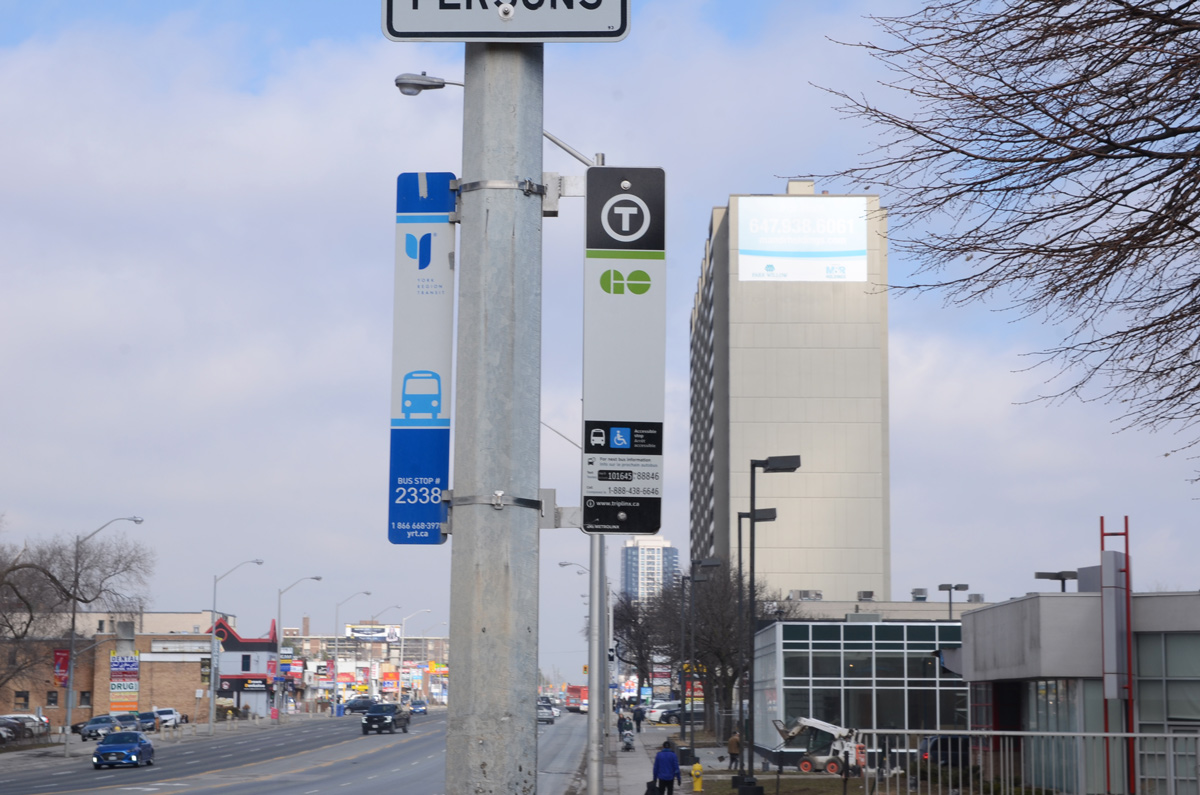People know that bus stops are a place you can access transit. They know that train stations are a place you can access transit. If a bus stop is already clearly identifiable as a bus stop, there is no point in also identifying it as "transit".
Between the GO and the YRT stop markers, I think the YRT one does a better job at identifying "transit", because the largest logo is the universally recognizable bus icon, rather than a (T) icon that is only recognizable in places where it is the logo of a sepecific transit operator (such as the MBTA). Sure, if we added a T icon on every bus stop, streetcar stop and train station in the province, people would start to associate it with transit, but what would that accomplish? They already recognize the bus icon, the streetcar icon and the train icons.
The YRT marker is also much easier to spot thanks to its use of vibrant blue rather than black. The reason that many agencies have coloured strips on the top and bottom is that they helped make the stop markers stand out. Making those strips black eliminates that function, which may explain why Milton Transit chose to use their bright blue instead of following Metrolinx's austere standard.
Image by As I Walk Toronto
Here is how I would adjust Metrolinx's proposed stop marker standard to make it clearly identifiable as a bus stop, and make the design brighter from a distance:
View attachment 535770






